History
-
Incheon, the sea, and the Port of Incheon
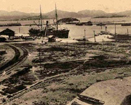
Incheon’s old name already implies that the destiny of Incheon depends on the sea. Michuhol (彌鄒忽) can be construed as the ‘city of water’ or a seaside village. The sea itself is the source of economic value and a channel for communication and contact as well.
In particular as a small peninsula with its adjacent bays in the West Sea, Incheon is an appropriate place for marine activities. The reason why the Biru (沸流) kingdom, the founder of the ancient Incheon, moved southwards and occupied this place as a capital is that it may have been easy access to salt and other various types of seafood in conjunction with favorable geographical conditions for marine traffic.
Centered in old Incheon, Gyeonggi Bay and the Han River Estuary were very important venues for maritime traffic in East Asia. Incheon served as a channel for exchange with China after the end of the Baekje Kingdom, which also proves that Incheon was at a key point for maritime traffic. During the Three Kingdoms era, Incheon was in the middle of a fight for territory between Goguryeo, Baekje, and Silla dynasties along the Han River for possession of the strategic position on the Korean Peninsula. Its old name, Michuhol, was changed to ‘Maesohol (買召忽)’ during the Goguryeo’ occupation and then to ‘Soseong (邵城)’ during the period of Unified Silla. -
A transportation Route to the World
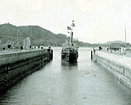
Unified Silla used three navigational courses to develop aggressive diplomatic relations with the Tang Dynasty. Among them, the northern coastal course along the Incheon shore may have usually been used as a starting point and destination between the two dynasties because of the low risk of shipwreck or distress there.
The Goryeo Dynasty was founded on powerful and wealthy local marine families called Hojok. After the founding, it designated Songak as a new capital and facilitated maritime activities more actively centered on Yeseongkang. In those days, Incheon’s Yeongjongdo Island, Ganghwado Island, and Gyodong area also played pivotal roles as the gateway for Yeseonggang. -
Recession: The marine policy during the Joseon Dynasty
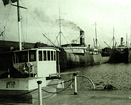
Incheon served as a gateway to Gaegyeong while Goryeo Dynasty was falling into a trap of recession upon entering the Joseon Dynasty era because of the Joseon Dynasty "Haegeum Policy(海禁政策)" of self-sustaining land economy at home and blockading the seas abroad just as the Ming Dynasty did.
After that, Incheon existed as a self-sufficient farming and fishing village for two centuries. However, it reemerged as a key location around the 17th century after the Japanese and Manchu invasions. Moreover, all of Ganghwado Island was fortified.
In the late Joseon Dynasty, Jemulpo was opened up to trade with foreign countries according to the Treaty of Chemulpo with Japan. This was determined considering the political and military value of Incheon. Accordingly, Incheon, which had once been regarded as Haemunyochung (海門要衝, a strategic location in the sea) and Bojangjungji (保障重地, an important territory for national defense), eventually turning into ‘Mulhwajeokjae’, an imperial domain. -
Reborn as an international seaport after the opening of the port
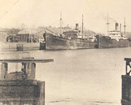
Jemulpo was opened up due to the Treaty of Chemulpo in 1883 (20th year of King Gojong). After that, Incheon, once a rural fishery village, rapidly changed into a modern colonial town and international seaport. As transactions with foreign countries had increased since Incheon opened up its port, Incheon Port grew as an international seaport, accounting for 50% of Korea’s total transactions in 1907. The total amount of trade in Incheon Port increased approximately 40 times for 30 years from 1910 to 1939.
-
Incheon Port after liberation

Immediately after liberation, Incheon Port’s function of importation was revitalized. The importance of this port overwhelmingly increased as shown in its share of the total revenues in Korea: 94% in 1946, 85% in 1948, and 88% in 1949. Although production was diminished after liberation, Incheon played a role as a gateway to the capital as well as a provider of every industrial product.
However, the Korean War in 1950 severely hit ‘Incheon Port’. The Battle of Incheon destroyed most of its port facilities and developed areas, nearly paralyzing its functions as a port.
Due to the 1st Incheon Port Development Project between 1973 and 1978, port facilities were remedied by means such as the breakwater of the lock, port pavements, etc. Private capital enterprises such as Hanjin Transportation and Korea Express made investments in Pier 4 of the Inner Port in 1973. As a result, facilities dedicated to handling containers were completed for the first time in Korea.
The 2nd Incheon Port Development Project was promoted from 1981 to 1985 to finally extend the quays of piers in the Inner Port, create a coal pier, and reinforce cargo handling facilities such as conveyor systems and cranes. The exclusive grain port, silos, Pier 8 and other facilities were constructed in that period. -
The Present and the future of Incheon Port
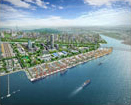
Located close to China, Incheon Port is currently facing another opportunity to further its prestige because conditions advantageous to Incheon are forming nowadays. Specifically, the exchanges between China and Korea have been increased due to China’s rapid economic growth, and ports and logistics complexes are vigorously being extended in conjunction with the designation of the Incheon Free Economic Zone.
At the beginning of the 21st century, a container terminal with ICT (2 berths), SICT (2 berths), E1CT (1 berth), and CJ Korea Express (2 berths) was constructed in South Port, a leader in the outer port era. Besides, the development of port facilities has been completed in North Port, so now it can intensively deal with industrial raw materials such as hardwood, scrap iron, and subsidiary raw materials as a comprehensive port equipped with 17 berths in total. As the 1st phase of Incheon New Port, the Seongwang New Container Terminal opened in June 2015. Thanks to this new port, Incheon Port has just begun to write its new history and thereby become a logistics hub in Northeast Asia. This will create a solid foothold for Incheon Port, taking it out of its suffering from stale port functions to the elevation of its position by decentralizing its functions that depend on Inner Port and expanding its scale.
In addition, Incheon Port inaugurated an era of one million international passengers in 2011 by opening 10 new international liner routes between China and Korea. It has also contributed to improving sea traffic services for customers including island residents by operating 12 lines between islands near coastal regions.
Unlike the time when its activities only centered on port roles, Incheon Port will soon fulfill its role as an outpost for marine tourism and leisure industries in capital areas by completing the construction of an international liner and a cruise pier by 2017 and by promoting the long-term redevelopment of its Inner Port. Moreover, it will create a new flow of logistics by attracting companies and freight through linking up with the Incheon Free Economic Zone, completing a new port in 2020, and developing a high value-added port hinterland. In addition, Incheon Port will increase the quality and added value of port logistics services so as to once again become the heart of logistics in Northeast Asia.


